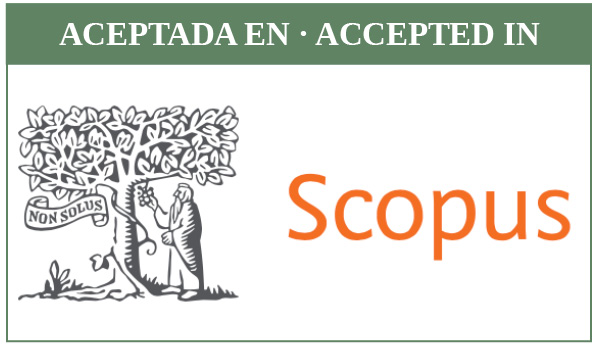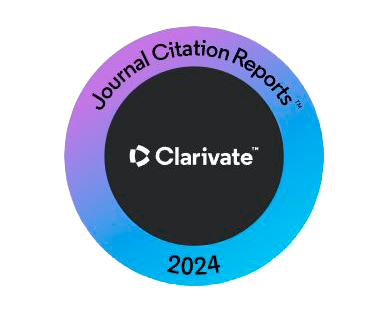Rutas y transformaciones en el espacio magrebí (ss. II_VIII-VIII_XIV)
DOI :
https://doi.org/10.30827/meaharabe.v74.31012Résumé
La tradicional idea de que el Mágreb ocupaba un espacio periférico en el orbe islámico ha sido claramente sobrepasada por las nuevas aproximaciones historiográficas. La elección del Mágreb para este monográfico está basada en situarlo en una posición central, tal y como corresponde, por otra parte, al proyecto al que se vincula esta sección monográfica[1]. La situación geográfica del Mágreb permite, no solo su estudio como espacio con proyección y movilidad interna, sino también en su papel de conexión con otras áreas: al-Andalus, oriente y la zona de África al sur del Sáhara.
Este monográfico pretende contribuir al estudio de la movilidad de poblaciones asociada al Mágreb, así como a su propia conformación territorial y poblacional en época medieval. Para ello nos hemos basado en el amplio repertorio de fuentes árabes medievales que se refieren al occidente islámico, de tal manera que nuestros estudios nos permitan una visión diacrónica y diversa de los fenómenos que son objeto de nuestro interés. Las movilidades de grupos e individuos responden a una abundante casuística de difícil aprehensión, pero, no obstante, hemos pretendido que, al menos, una parte de la variedad de los motivos de desplazamientos se vea reflejada en los estudios que componen esta sección monográfica.
[1] Esta sección monográfica forma parte de los resultados del proyecto “Tránsitos y migraciones en el norte de África: análisis diacrónico de la población y su entorno (DIANA)”, que se integra en el coordinado MAGNA II (Coord. M. Á. Manzano) “Tránsitos y transformaciones en el espacio y la población magrebíes”, MICIN/AEI/10.13039/501100011033 y FEDER Una manera de hacer Europa.
Téléchargements
Références
ABŪ L-‘ARAB, Muḥammad b. Aḥmad b. Tamīm al-Tamīmī l-Qayrawānī. Ṭabaqāt ‘ulamā’ Ifrīqiyya. Ed. y Trad. Mohamed BEN CHENEB. Classes des Savants de l’Ifrīqiya). Alger: Faculté des Lettres d´Alger, 1920.
AILLET, Cyrille (Coord.). Le kharijisme ibadite dans le Maghreb médiéval (VIIIe-XIIIe siècles): espaces, réseaux, modèles. https://maghribadite.hypotheses.org/ [consultado el 05/06/2024].
ÁVILA, Mª Luisa (I.P.). Prosopografía de ulemas de al-Andalus (PUA). https://exea.csic.es/es/PUA [consultado el 3/06/2024].
FIERRO, Maribel y PENELAS, Mayte (I.Ps). Contextos locales y dinámicas globales: al-Andalus y el Magreb en el Oriente islámico (AMOI). https://www.eea.csic.es/eea-proyectos-de-investigacion/contextos-locales-ydinamicas-globales-al-andalus-y-el-magreb-en-el-oriente-islamico-amoi/ [consultado el 3/06/2024].
PENELAS, Mayte (Eds.) The Maghrib in the Mashriq. Knowledge, Travel and Identity. Berlín/Boston: De Gruyter, 2021.
MARÍN, Manuela. “Biographical Dictionaries and Social History of al-Andalus: Trade and Scholarship”. Scripta Mediterranea, 19-20, (1998-99), pp. 239-257.
NIXON, Sam (ed.). Essouk-Tadmekka. An Early Islamic Trans-Saharan Market Town. Leiden: E. J. Brill, 2017.
PENELAS, Mayte y FIERRO, Maribel (I.Ps.). Al-Andalus y el Magrib en el Oriente islámico: movilidad, migración y memoria (AMOI-II). https://ilc.csic.es/es/research-project/andalus-magrib-oriente-islamico-movilidad-migracion-memoria-amoi-ii [consultado el 3/06/2024].
Téléchargements
Publié-e
Comment citer
Numéro
Rubrique
Licence
Los autores que publican en esta revista están de acuerdo con los siguientes términos:
1. Los autores conservan los derechos de autor y garantizan a la revista el derecho de ser la primera publicación del trabajo al igual que licenciado bajo una Creative Commons Attribution License que permite a otros compartir el trabajo con un reconocimiento de la autoría del trabajo y la publicación inicial en esta revista.
2. Los autores pueden establecer por separado acuerdos adicionales para la distribución no exclusiva de la versión de la obra publicada en la revista (por ejemplo, situarlo en un repositorio institucional o publicarlo en un libro), con un reconocimiento de su publicación inicial en esta revista.
3. Se permite y se anima a los autores a difundir electrónicamente (por ejemplo, en repositorios institucionales o en su propio sitio web) la versión publicada de sus trabajos (versión post-print del editor) o, en su defecto, el de la versión post-print del autor ya evaluada y aceptada. Esto puede dar lugar a intercambios productivos, así como a una citación más temprana y mayor de los trabajos publicados (Véase The Effect of Open Access).
4. La revista no se hace responsable de las opiniones vertidas por los autores.















